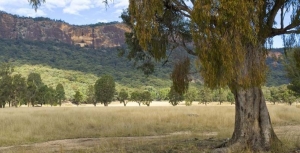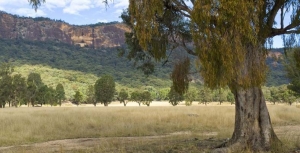Displaying items by tag: landclearing
NSW Government News
2018 Budget
The NSW government is flush with money thanks to the property boom. But, according to the Opposition, the June budget continued the trend of spending below the budget allocation and cutting future allocations to the Office of Environment and Heritage (OEH) for a second year. OEH contains the National Parks and Wildlife Service where 26% of permanent rangers and 35% of area managers have been dismissed.
Last financial year there was a large under-spend of $165 million and this year there was a budget cut of $66 million for the OEH. Together this is $231 million less funding available to spend on the state’s environmental challenges.
$231 million is equivalent to 20% of all spending allocated to OEH in 2018-19.The budget for the OEH is less than the government’s first budget eight years ago.
I did try to verify these figures from the Budget Papers but they keep on changing the descriptions of funding categories so it is impossible to compare year on year figures.
Another Challenge to the Land Clearing Codes
Conservationists have been very unhappy about the NSW government’s attitude to the environment for a long time. One of their worst actions is the relaxation of the land clearing codes under the so-called Biodiversity Conservation Act.
In March the Nature Conservation Council won a case in the Land and Environment Court that declared the native vegetation clearing code that came into force in August 2017 was invalid. The grounds for the decision were based on a technicality that the primary industries minister failed to follow due process and obtain the concurrence of the environment minister before making the codes, as required by law. The government immediately reintroduced the same codes without any consideration of the objections for scientists.
Now the Nature Conservation Council has found better grounds to fight against the land clearing code and has launched another legal action through the Environment Defenders Office (EDO).
On the basis of the documents received under freedom of information laws, it appears that the minister for the environment failed to give proper, genuine and realistic consideration to the decision to grant concurrence for the making of the 2018 code and to the principles of ecologically sustainable development, as required by law. The documents indicate that the minister for the environment did not have sufficient time or material to enable to her to make the decision and that as a result, the 2018 code was made unlawfully.
The CEO of the EDO David Morris has stated:
This is a remarkable state of affairs. The legal regime makes it clear: the responsibility for ensuring that the code does not have an unacceptable impact on the environment lies with the Environment Minister. The code is predicted to have significant and far reaching impacts to biodiversity.
Further Details of the Code
The land clearing code allows landholders to carry out significant amounts of self-assessed clearing of native vegetation without further approval or environmental assessment, including in areas that might be home to threatened species and ecological communities. It doesn’t require any cumulative assessment of greenhouse gas emissions arising from clearing under the code. Under the Biodiversity Conservation Act 2016 both clearing and climate change are listed as key threatening processes to biodiversity. Climate change is the greatest long-term threat to biodiversity.
While the 2017 code was intended to be released with native vegetation regulatory maps to assist landholders to identify where clearing of native vegetation on rural can and cannot occur, those maps are yet to be released, which means landholders continue to be required to self-assess whether such land management clearing codes even apply to their land.
If this case is successful, it will mean that there has not been a valid code in force under the act since the new native vegetation laws came into force. Given the ongoing legal uncertainty around the code, any clearing done in reliance on the code is potentially unlawful.
Biodiversity Laws Court Case
The Nature Conservation Council with the help of the Environmental Defenders Office won the case challenging the process of implementation of the land clearing codes.
The court decision was an opportunity for Premier Berejiklian to amend the bad laws her government had implemented and make some key improvements to protect habitat.
Instead, she has chosen to stick rigidly with the same destructive laws and ignore the science that highlighted the likely destruction. By the government’s own assessment, they will lead to a spike in clearing of up to 45% and expose threaten wildlife habitat to destruction, including 99% of identified koala habitat on private land.


